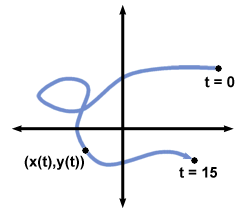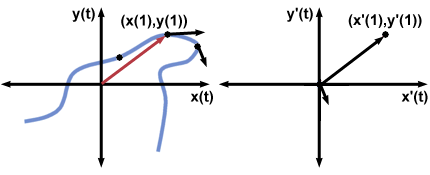Please wait while we process your payment
If you don't see it, please check your spam folder. Sometimes it can end up there.
If you don't see it, please check your spam folder. Sometimes it can end up there.
Please wait while we process your payment

By signing up you agree to our terms and privacy policy.
Don’t have an account? Subscribe now
Create Your Account
Sign up for your FREE 7-day trial
By signing up you agree to our terms and privacy policy.
Already have an account? Log in
Your Email
Choose Your Plan
Individual
Group Discount
Save over 50% with a SparkNotes PLUS Annual Plan!
 payment page
payment page
Purchasing SparkNotes PLUS for a group?
Get Annual Plans at a discount when you buy 2 or more!
Price
$24.99 $18.74 /subscription + tax
Subtotal $37.48 + tax
Save 25% on 2-49 accounts
Save 30% on 50-99 accounts
Want 100 or more? Contact us for a customized plan.
 payment page
payment page
Your Plan
Payment Details
Payment Summary
SparkNotes Plus
You'll be billed after your free trial ends.
7-Day Free Trial
Not Applicable
Renews July 15, 2025 July 8, 2025
Discounts (applied to next billing)
DUE NOW
US $0.00
SNPLUSROCKS20 | 20% Discount
This is not a valid promo code.
Discount Code (one code per order)
SparkNotes PLUS Annual Plan - Group Discount
Qty: 00
SparkNotes Plus subscription is $4.99/month or $24.99/year as selected above. The free trial period is the first 7 days of your subscription. TO CANCEL YOUR SUBSCRIPTION AND AVOID BEING CHARGED, YOU MUST CANCEL BEFORE THE END OF THE FREE TRIAL PERIOD. You may cancel your subscription on your Subscription and Billing page or contact Customer Support at custserv@bn.com. Your subscription will continue automatically once the free trial period is over. Free trial is available to new customers only.
Choose Your Plan
This site is protected by reCAPTCHA and the Google Privacy Policy and Terms of Service apply.
For the next 7 days, you'll have access to awesome PLUS stuff like AP English test prep, No Fear Shakespeare translations and audio, a note-taking tool, personalized dashboard, & much more!
You’ve successfully purchased a group discount. Your group members can use the joining link below to redeem their group membership. You'll also receive an email with the link.
Members will be prompted to log in or create an account to redeem their group membership.
Thanks for creating a SparkNotes account! Continue to start your free trial.
We're sorry, we could not create your account. SparkNotes PLUS is not available in your country. See what countries we’re in.
There was an error creating your account. Please check your payment details and try again.
Please wait while we process your payment

Your PLUS subscription has expired
Please wait while we process your payment
Please wait while we process your payment

Velocity, Acceleration, and Parametric Curves
Suppose an ice skater named Lindsay is gliding around on a frozen coordinate plane. Define functions x(t), y(t), so that at time t (in seconds) Lindsay's position on the coordinate plane is given by (x(t), y(t)). If Lindsay starts at time t = 0 and stops at time t = 15, she will trace out the parametric curve consisting of the points (x(t), y(t)) with t in the interval [0, 15], perhaps like the one sketched below.

Two questions naturally arise. First, what is Lindsay's velocity (direction and speed) at any given moment? Second, how is it changing (that is, what is her acceleration)? It is actually fairly easy to answer these questions using the derivative.
Lindsay's velocity at time t can be represented by an arrow with a certain direction and length, called the velocity vector. The direction of the vector will indicate her instantaneous direction, and the length of the vector will equal her instantaneous speed. We would expect the direction of the velocity vector at time t to be the same as the direction of the tangent line at (x(t), y(t)) to the curve describing Lindsay's path. If we imagine the velocity vector to have its tail at the origin of a coordinate plane (rather than at a point of tangency to the parametric curve), we need only specify the coordinates of its head to give its length and direction.
It is fairly easy to see that the correct coordinates for the head of the velocity vector at time t0 are simply
| (x'(t0), y'(t0)) |
where the derivatives are with respect to t. The speed is equal to the length of this velocity vector:
 |
This is all illustrated in the figure below.

Note that the head of the velocity vector (with tail fixed at the origin), located at (x'(t), y'(t)) at time t, traces out another parametric curve. The velocity vector of this new curve at time t0,
| (x''(t0), y''(t0)) |
is called the acceleration vector of the original curve at time t0. Its direction indicates the instantaneous direction of motion of the head of the velocity vector and its length is the speed at which the head of the velocity vector is moving.
It is important to realize that there is a difference between the length of the
acceleration vector, which is the rate at which the velocity it changing, and the rate at
which the speed is changing. For instance, if an object is moving in the circular path
(x(t), y(t)) = (cos(t), sin(t)), then the speed is constant (for (x'(t), y'(t)) = (- sin(t), cos(t)) has length  = 1, yet the acceleration is
nonzero and has constant length -- (x''(t), y''(t)) = (- cos(t), - sin(t)) has length
= 1, yet the acceleration is
nonzero and has constant length -- (x''(t), y''(t)) = (- cos(t), - sin(t)) has length
 = 1. One can think of this phenomenon as follows: the
acceleration contains contributions from the rate of change of the speed, and from the rate
of change of the direction of the velocity.
= 1. One can think of this phenomenon as follows: the
acceleration contains contributions from the rate of change of the speed, and from the rate
of change of the direction of the velocity.
Please wait while we process your payment

